New Zealand's house prices have surged in 2021, with the national average property value rising almost 27% to $1.075 million.
But some locations have done better than others, with the home of hit 1980s Kiwi song Poi E recording the biggest house price leap in the country.
At regional level Canterbury is the country's hottest housing market; its average property value has jumped 33.6% to $760,000, according to the latest figures from the OneRoof-Valocity House Value Index.
Start your property search
Following closely behind are Hawke's Bay (up 30.9% to $893,000); Bay of Plenty (up 30.2% to $1.039m); and Waikato (up 30% to $962,000).
All four regions have enjoyed strong growth over the last three-months, indicating there is still room for movement.
Auckland's average property value rose 25.3% over the last 12 months but it has picked up speed in the last quarter, growing 7.3% ($105,000) to $1.544m.
Recording strong annual growth of 27.9% but slowing down over the last quarter to 4.7% is Greater Wellington, where the average property value sits at $1.109m.
New data from OneRoof has also identified the 10 suburbs around New Zealand where house prices have jumped the highest over the last 12 months. Leading the pack with 60.8% growth is Pātea, in South Taranaki.
None of the suburbs identified are in New Zealand's major cities, and all but three have an average property value of less than $500,000, with one sporting an average property value of $280,000.
The full list is below, but OneRoof talked agents in five of the suburbs to get a sense of what made house prices in these locations jump between 16 and 33 percentage points above the national average.
Pātea, South Taranaki
Current average property value: $304,000
12-month gain: 60.8% ($115,000)
First National Taranaki agent Anne Robertson has been selling property since 1986. That was just two years after the Pātea Māori Club had its iconic number one hit song, Poi E, which put Pātea on the map. The town is now its own real estate number one hit, having recorded the biggest property value growth in New Zealand in the last 12 months.
“Pātea is a bit of a hidden gem,” says Roberson. “It’s coastal and it has a reasonably temperate climate. We have all the services. We have a Four Square, a medical centre, a chemist, a butcher, and a couple of little cafes. It’s 20 minutes' [drive] from Hawera and 40 minutes’ drive to Whanganui.”
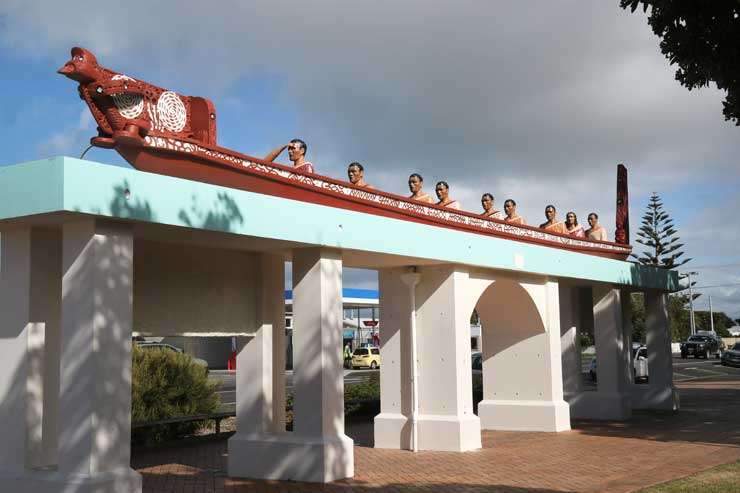
Hot spot: One of the distinctive buildings that line the main street of Pātea. Photo / Bevan Conley
“It used to have a stigma being a freezing works town.” The closing of the works in 1982 changed the town, says Roberts on. “Since it closed a lot of people have come in because the freezing works weren’t there.”
One of Robertson’s recent sales, a three-bedroom house on Egmont Street, is a great example of the town’s housing stock. The 1910s roughcast character home, which is walking distance from the beach, sold for $350,000, more than $130,000 above what it sold for in January 2020.
Pātea’s homes tend to be older, but bit-by-bit are being done up. A growing community of artists are making Pātea their home, which is helping drive the renaissance of the township, says Robertson.
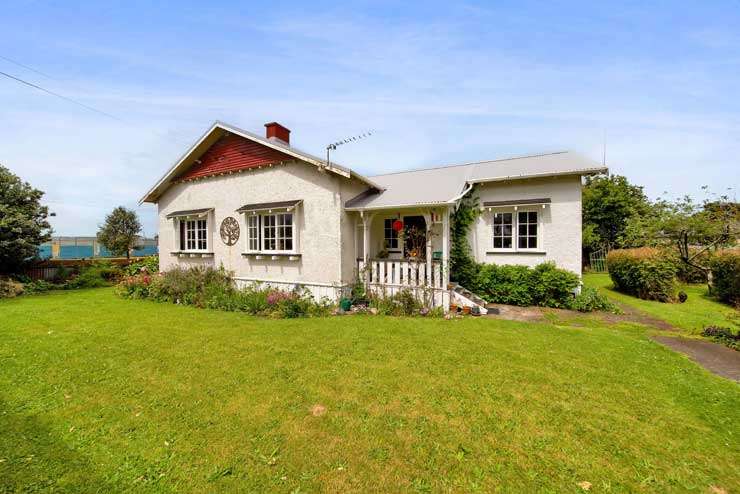
This character home in Pātea sold earlier month for $350,000. Photo / Supplied
First National Taranaki agent Shawn Gibbon says all four South Taranaki towns and suburbs that feature on the list (Pātea, Manaia, Waverley and Eltham) were undervalued to start with. “There is a hell of a lot of employment in South Taranaki,” says Gibbon. “People are finding this out now and moving from the cities. It has driven prices up to where they should have been in the first place. That’s really what caused the spike.”
Maraenui, Napier
Current average property value: $613,000
12-month gain: 52.9% ($212,000)
Stuart Christensen, Tremains Napier general manager, says that for many first home buyers struggling to get on the property ladder Maraenui is the only place that’s within budget. “If some people have the money they may choose not to buy there. However, it’s one of the areas that a lot of our first home buyers and people (with) a pretty tight budget have had to go,” says Christensen.
“You've got a lot of first home buyers trying to enter the market. Because of that prices have gone up.” At the same time investors have been exiting the suburb because of the cost of upgrading older homes to the government’s healthy homes standards.
A classic two-bedroom 1960s home on Masefield Avenue in the suburb recently sold for $620,000. “This same property a year ago would have been in the low to mid $500,000 a year ago,” says Christensen.
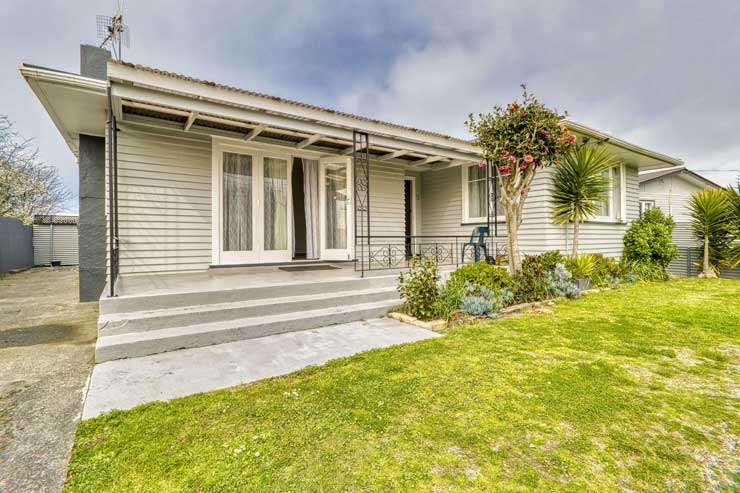
A two-bedroom house of Masefield Avenue in Maraenui fetched $620,000 in September. Photo / Supplied
Tamaterau, Whangarei
Current average property value: $1.249m
12-month gain: 55% ($443,000)
The harbourside suburb of Tamaterau is the gateway to Whangārei Heads, says Ray White agent Brett Sawyers, who has sold some of the handful of Tamaterau properties that have changed hands in the past 12 months.
Sawyers says Tamaterau is a relatively small suburb, but average prices are pulled up by sales in the Headland Farm Park community. “It’s a gated area that has very big high-class houses. Some of them might sell for $2m or $3m,” he says.
It might be small, but Tamaterau draws interest from around the globe. “There's a lot of people who want to move to somewhere that's coastal and out of the way. We get a lot of enquiry from pretty much all over the world. People who are putting a pin on the map and saying, ‘Where's the furthest place away from all this Covid carry on?’”
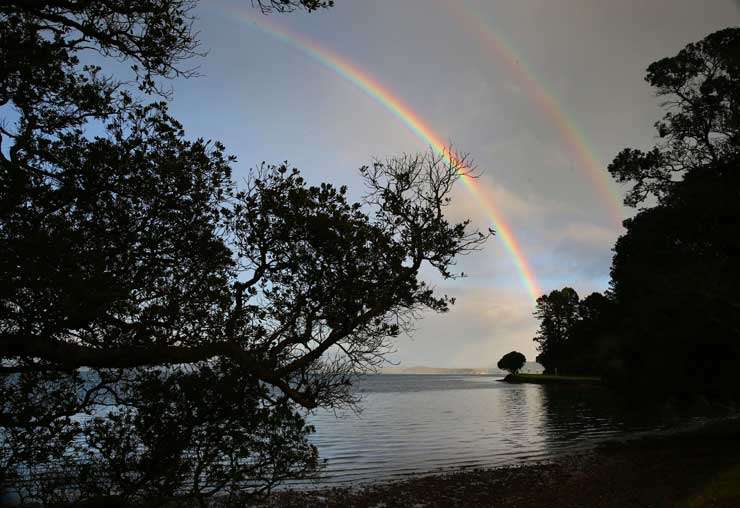
Stunning: The view from Tamaterau, in Whangarei. Photo / Tania Whyte
It's not just Tamaterau. Whangārei prices have risen enormously over the same period, says Sawyers. “The whole of Whangārei has increased in value dramatically in the last year or two. I think Tamaterau is probably just a little bit more because it's such a lovely coastal part of the world.”
Sawyers’ most recent Tamaterau sale was a section at 421 Whangarei Heads Road, which sold to a young local couple for $345,000. The same section, listed with a different agency, failed to find a buyer at $250,000 in 2020, which just shows how prices have risen.
Eketāhuna, Tararua
Current average property value: $483,000
12-month gain: 50.9% ($163,000)
To many, Eketāhuna is jokingly referred to as New Zealand’s Timbuktu: the town in the middle of nowhere. Harcourts Masterton agent Shannon Hemi grew up there on a dairy farm and has seen the town blossom over the past 21 years. She is not surprised that it’s one of the top 10 Kiwi locations for house price growth.
“When we moved here in 2000 it had one dairy and two pubs,” she says. “It’s much nicer now. It has two cafes, a really nice homeware store, and people are more inclined to stop.”
More importantly Eketāhuna is also within commuting distance of Masterton where buyers can’t even get a section for the price of a house in Hemi’s old hometown. “Eketāhuna is really good value for money,” says Hemi. “The commute’s not that bad and the primary school is really nice. I absolutely loved it there.
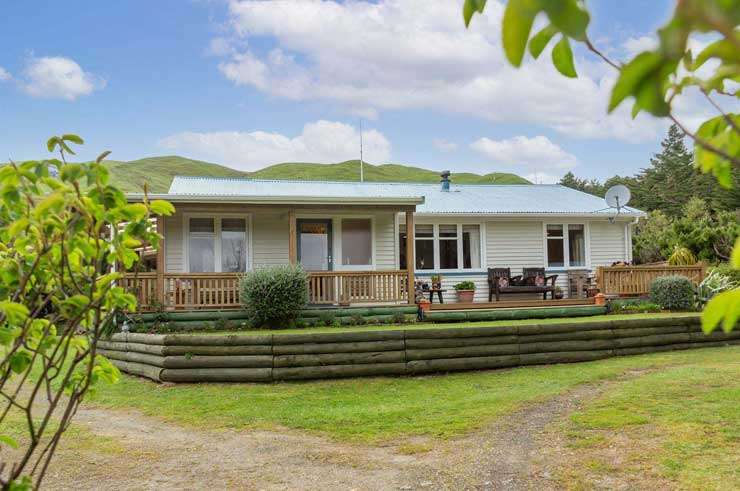
This three-bedroom home on Opaki Kaiparoro Road, in Eketāhuna, recently sold for $468,000. Photo / Supplied
“When we first moved here there were a lot of run-down houses. Now people are coming here and taking a bit of pride in their properties. There are fewer investors here and people are owner occupiers, which makes a difference. Owner occupiers are less worried about overcapitalising because they know prices are going to go up.”
An example of a home that has benefited from the big rise in prices in Eketāhuna is 152 Opaki Kaiparoro Road, says Hemi. The property sold this month in a multi offer situation for $634,000.
“All offers were received from out-of-towners who were attracted to the rural lifestyle and value for money that Eketāhuna offered,” she says.
Rolleston, Selwyn
Current average property value: $910,000
12-month gain 44% ($278,000)
When Bayleys agent Sarah Booth first set up shop in Rolleston in 2007 people thought she was a bit crazy. They don’t anymore.
Booth says “Rolleston really has taken off.” The town now draws buyers from all over the country.
“It’s about quality of life, the new homes, and what buyers can get for their money,” says Booth. The town has taken off since the earthquakes in part because it’s offering greenfield development and the land doesn’t have a technical category rating, which can limit what can be built in other parts of Canterbury.
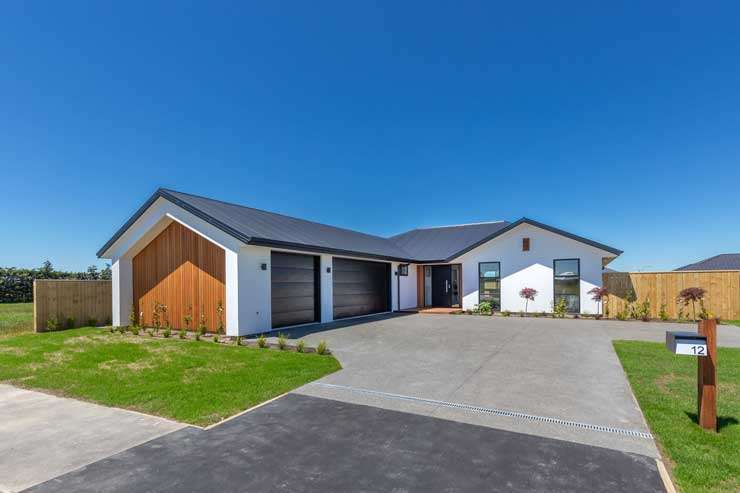
A four-bedroom new build on Talon Drive, in Rolleston, Selwyn, sold for $1.235m. Photo / Supplied
“We have a lot of conversations around where in Christchurch is good land, where [buyers] can get a new latest tech home,” says Booth. Rolleston ticks the boxes. “Rolleston has grown significantly over the years with the [new] infrastructure. It has lots of new schools, new shops and facilities.
“The word out is out on the streets, that it's a great place to get a new or near new family home. I certainly think that the new motorway has made a difference as well. When I first [started] selling out of Rolleston people did comment on the commute. Nobody ever makes that comment now.”
An excellent example of how properties are appreciating in Rolleston was a sale at 12 Talon Drive, which sold for $1.235m recently. A similar sized home built by the same developer with very similar features sold in October 2020 for $730,000.



















































































